Playlist compiled by BeeHype.
Text by Malu Halasa & BeeHype
The ongoing protests, strikes and closures in Iran – sparked by the death of 22-year-old Kurdish woman Mahsa Amini on September 16 – are about to enter their fourth month. The demonstrations were initially led by women and now include people from all walks of life: schoolchildren, factory workers, truckers, drivers, even shopkeepers. According to the Norway-based NGO, Iran Human Rights, at least 458 people, including 63 children and 29 women, have been killed in the nationwide protests. IHR received a high volume of reported deaths, which it continues to investigate despite the security situation and internet disruptions in Iran. By its estimations, the actual number of people killed is believed to be far higher.
At the time of writing, two protestors Majidreza Rahnavard and Mohsen Shekari, both 23, were the first protestors executed — by hanging. The young men were accused of moharebeh, “waging war against God.” Other protestors have been sentenced to death for efsad-fil-arz, “corruption on earth.” The Islamic Republic withholds the names of demonstrators who have been sentenced to death, and denies them access to a lawyer, which contravenes the country’s own Shari’a law for people facing the death penalty.
Recently Javaid Rehman, special rapporteur on Situation of Human Rights in the Islamic Republic of Iran, told the U.N. that over 14,000 people have been arrested in Iran in the past six weeks.
(woman, life and freedom, Persian) and in Kurdish, “Jin, Jian, Azadi,” were some of the first slogans chanted in the streets. Songs, hymns and anthems also bolstered the protests. Some have been sung in public to amplify hope and courage; others listened to in times of solitude and grief. Many of these songs have gone viral, and their writers, singers and rappers have not gone unnoticed by the Islamic regime. Figures from the House of Music (the Iranian Musicians’ Union) show at least 21 musicians have been detained by the authorities, including the orchestra conductor Mahmoud Mirzaie, world-renowned classical percussionist Navid Afqah and dissident rapper Toomaj Salehi.
The most famous of the protest songs is “Baraye …” by Shervin Hajipour. Its lyrics are a collage of trending protest tweets, demanding radical change in Iran, which all start with the word baraye (for… or because of …, in Persian). The song became an instant hit with 40 million views in less than 48 hours after Hajipour’s self-recorded video for the song appeared on his Instagram account on September 28. It is the uprising’s unofficial anthem and visitors returning back from Iran to Britain said it was being power-played on car stereos long after it was taken down from the Instagram, following Hajipour’s arrest by the authorities on September 29. This popular song has been performed by artists around the world, including Coldplay, featuring Golshifteh Farahani, the Iranian movie star in exile, during an October concert in Buenos Aires; Swedish singer Carola Häggkvist; Rana Mansour on The Voice, in Germany; and by Azam Ali and other Iranian singers in the diaspora.
His most recent song “Faal” (fortune telling) predicts what will happen after Iran changes. Shortly after its release in October, the rapper was arrested with two friends in Isfahan. A photograph published after his arrest showed him blindfolded. Afterwards, the regime released a video of the false confession Salehi was forced to give under duress – an often-repeated tactic of the Iranian government. Judging from his experience and others’, the rapper’s assessment of the Islamic Republic rings devastatingly true. “We live somewhere horrific,” he once remarked, “You are dealing with a mafia that is ready to kill an entire nation … in order to keep its money, power and weapons.” Like Majidreza Rahnavard and Mohsen, who were executed, Salehi has been changed with moharebeh. Have no doubt, his life is at risk.
Hichkas, the father of Iranian rap, wrote his song “Ye Rooze Khub Miyad” (A Good Day Will Come) during the wave of Green Movement protests, which followed the disputed 2009 presidential elections. Now based in London, Hichkas wrote in “Inyekiam Vase” (this one is for…) a the thunderous, wrathful response to Shervin Hajipour’s song “Baraye.”
Roody, 23, is a prominent, new generation, woman rapper from West Tehran. She describes herself arapkon, or “rap do-er” in Persian. She has been rapping since she was 15. In a 2019 interview with Beehype’s Ali Eshqi, she said that despite hip-hop’s roots in African-American experience, the music localizes once it becomes part of another culture. “Hip-hop,” she said, “is an artistic global culture and movement.”
Unsurprisingly female Iranian rappers face more difficulties than women rappers in other parts of the world. In Iran, women rappers should not appear in videos. It is forbidden for women to sing let alone rap.
With its increased song space for lyrics, rap is tailor-made for conscious, political rhymes. Roody’s most recent single “Zan” (woman) speaks of the struggle that the people, especially women, have with the authorities, and honors the children who have been killed. The song was written and recorded after the major fire at Tehran’s notorious Evin prison, where political prisoners and arrested protesters are held in Tehran.
The Ministry of Culture and Islamic Guidance gave Mehdi Yarahi an award for best pop album of 2017. Less than a year later he was banned from performing and appearing on stage and television because he wore the uniform of workers arrested in 2017–18 labor protests in Khuzestan, and released the song and video for “Pare Sang” (broken stone), which criticized the 1988 Iran-Iraq War. Mehdi Yarahi’s “Soroode Zan” (woman’s anthem) is one of several songs from the protests, which takes the form of a soroode or revolutionary anthem. This hopeful song, which praises the women’s movement, was inspired by Mahsa Amini’s death and released in the first weeks of the protests.
Translated as oath hymn, “Soroode Sogand” is also known by the title “Everlasting Cry.” Performed by students from the Culture and Arts Department of Tehran University, it was posted on November 17, 1401 – according to the Iranian calendar. This song is a version of another song, “Sogand Be Khon Hamoranam” from 2008, whose singer and composer remains unknown. In “Soroode Sogand”, words have been changed and updated to represent the new phase of protest and revolution in Iran.
The lyrics of “Soroode Azadi” (freedom anthem), preformed by a group of anonymous music students, is set to the music of a famous revolutionary song from Chile. “¡El pueblo unido jamás será vencido!” (the people united will never be defeated, in Spanish) was composed by Chilean Sergio Ortega, in 1970. Regarded as an important revolutionary song in the political struggle of many countries, it has now become known in Iran.
https://www.youtube.com/watch?v=NNxYexRN1vM&t=1s&ab_channel=HamedDreamer
“Soroode Barabari/Javane Mizanam”
“Soroode Barabari/Javane Mizanam” (anthem of equality/I will bloom) is a cover of a 2008 anthem from the Iranian feminist movement. During the latest protests, a group of Iranian female singers living in the diaspora sang the song, which was arranged by Behrooz Paygan, in Toronto. It is dedicated to “the fighting people of Iran who stand up for freedom and equality.”
“Soroode Dokhtarane Sarzamine Aftab”
Performed by an anonymous collective of musicians, “Soroode Dokhtarane Sarzamine Aftab” (anthem of daughters of the land of the sun) is another revolutionary anthem. The song encourages people to join the revolution for a better and freer future.
Inspirational, “Avaze Leylaha” (chant of Leylas) is performed by anonymous musicians. Like Shervin Hajipour’s “Baraye,” it lists the many reasons for change in Iran.
One of the newest songs to date, “Mah-e Aban Bood” (it was November) was, again, recorded by anonymous musicians. The song commemorates the 2019–20 Bloody November. These protests initially started because of a 50–200 per cent increase in fuel prices. They were violently suppressed after they led to calls to overthrow the government and the Supreme Leader Ali Khamenei. The Islamic Republic shot and killed demonstrators by firing from rooftops, helicopters, and at close range with machine guns. To hide the scale of the tragedy, the government disposed of the bodies of the dead and warned families not to speak to the press or hold funerals. An estimated 1,500 people were killed in these protests from two years ago.
“Bella Ciao” by Behin and Samin Bolouri
Originally sung by women who weeded the rice fields of Italy in the 19th century, “Bella Ciao” (beautiful goodbye, in Italian) was allegedly adapted and adopted by Italian partisans fighting occupying Nazi Germans during the Italian Civil war, from 1943–45. Considered a classic in revolutionary songs, many versions have been performed worldwide.
Behin and Samin Bolouri are sisters who have been making music together since 2015. Their version in Persian has ties to Iran’s 1970s socialist movement. The Bolouris have covered dozens of Iranian songs from the 1960s to the 1970s, considered the golden age of Persian pop/indie music. Their performance of “Bella Ciao” became popular during early on the protests. Soon afterwards, Yashgin Kiani’s cover and performance of the song was also shared widely across social media platforms.
BeeHype’s many music journalists, bloggers and DJs collect, select and curate some of the best of music from local scenes in countries around the world and present it to global audiences. To date, the website has introduced 3,500 plus musicians and singers from about 140 countries. It also provides yearly playlists from regions and individual countries, which date back to 2014.













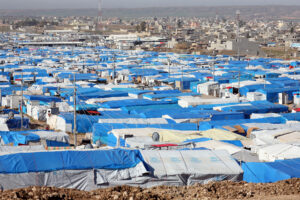







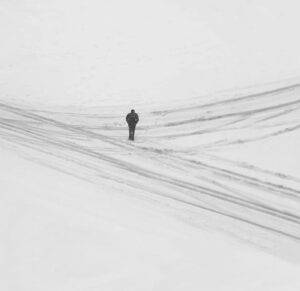







































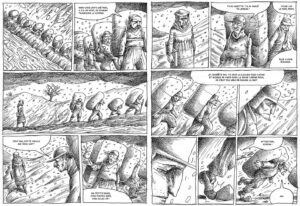



















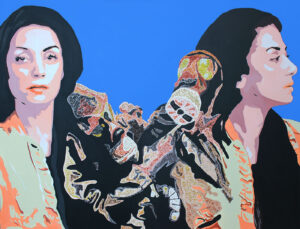






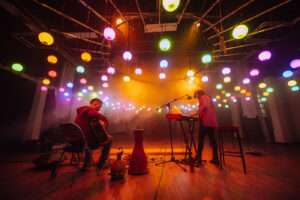
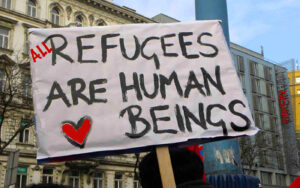
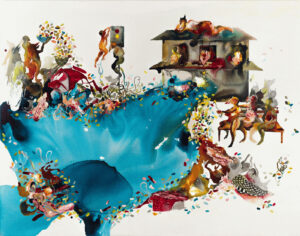










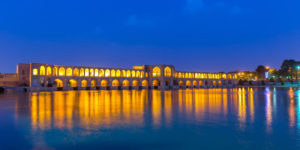

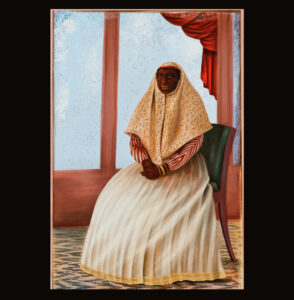





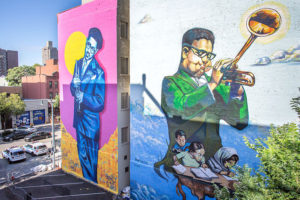

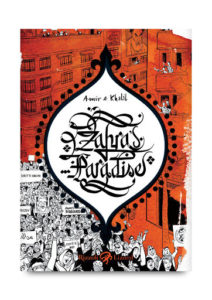
Thank you for this website